You Should Plant Artichokes and Asparagus Right Now
When you think about the expensive vegetables at the store, you know, the really sexy ones that have “a season,” you’re usually thinking of perennial vegetables. Somewhat ironically, they’re the most chill. Plant them once, kick back, and wait...
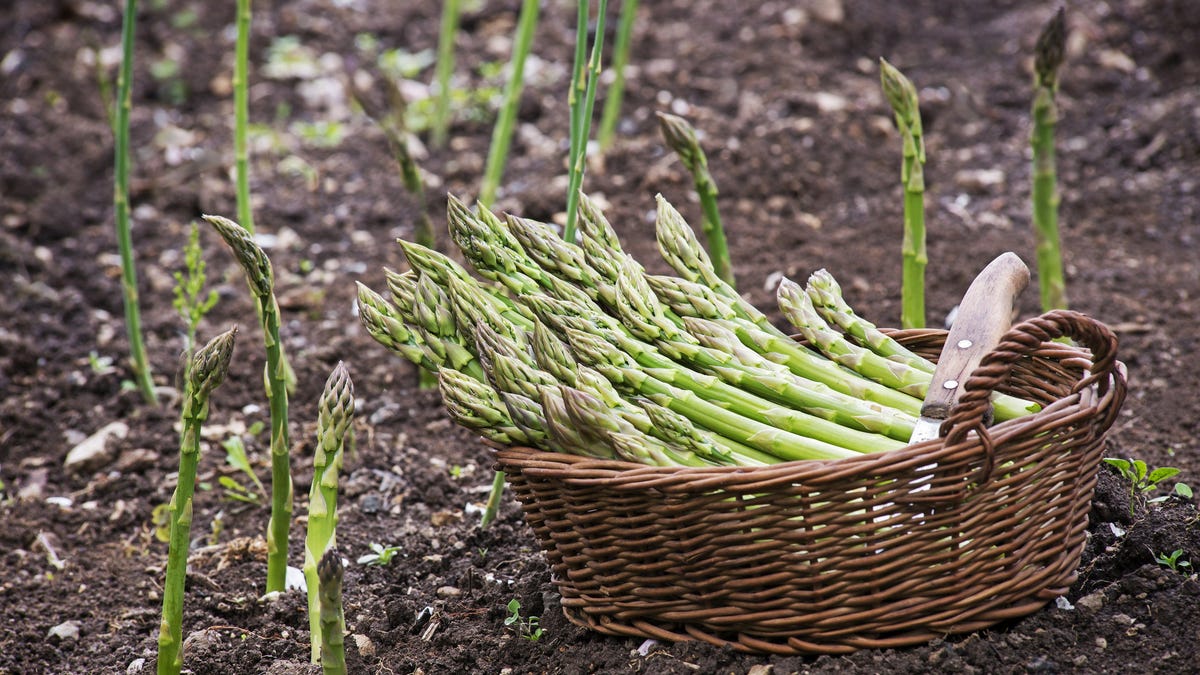
When you think about the expensive vegetables at the store, you know, the really sexy ones that have “a season,” you’re usually thinking of perennial vegetables. Somewhat ironically, they’re the most chill. Plant them once, kick back, and wait for them to pop up on their own, year after year.
Two of my favorite perennial vegetables are artichokes and asparagus, and they couldn’t be more different. When I moved in, I remember one of the perks being the place came with an already established asparagus bed. There was no evidence of the bed, but I was promised it would be there, come spring. And in March, tiny buds began to pop up, one by one, until I was handing out bouquets of it to people walking by, so inundated was I with spears.
How to Grow Asparagus
Trolling the Parisian markets, I became obsessed with the white asparagus, thick as carrots, that lined the stalls. I already knew how white asparagus was made, I’d watched Martha explain it years before. It’s blanched by piling up soil over the spears as they grow, keeping the light completely out. This gives white asparagus a more tender flavor and ghostly appearance.
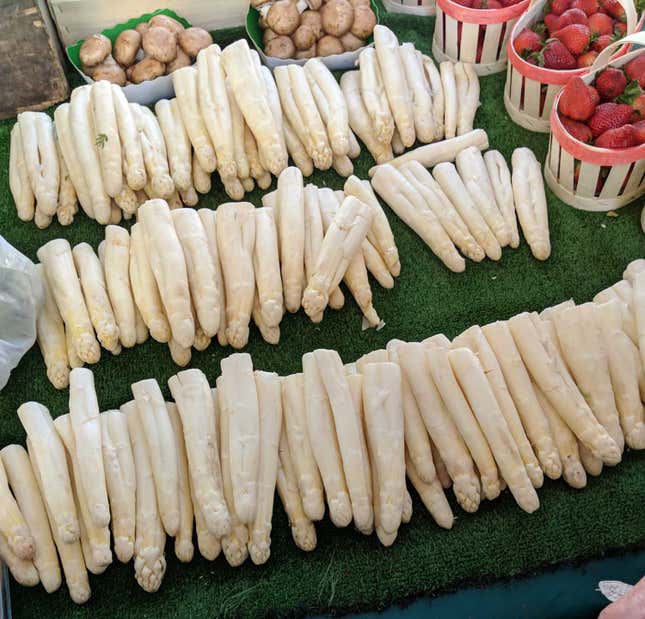
Freudian asparagusPhoto: Amanda Blum
Asparagus can be grown from seed or crown. It isn’t hard to start from seed, but most people choose crowns because you can’t harvest asparagus until the third year. By buying two- or three-year crowns, you’ll be harvesting next Spring.
While technically, any asparagus could be made white asparagus through blanching, there are French varieties you can buy as seed, but are hard to find as crowns. Those, you might consider starting yourself. There are purple asparagus spears, too, and you don’t have to bury them in dirt. Garden centers have a wealth of varieties to choose from, and you can plant them all to ensure years of asparagus in the future.
In any case, now is the time to get into the garden center and buy crowns, because they’ll be gone in a few weeks.
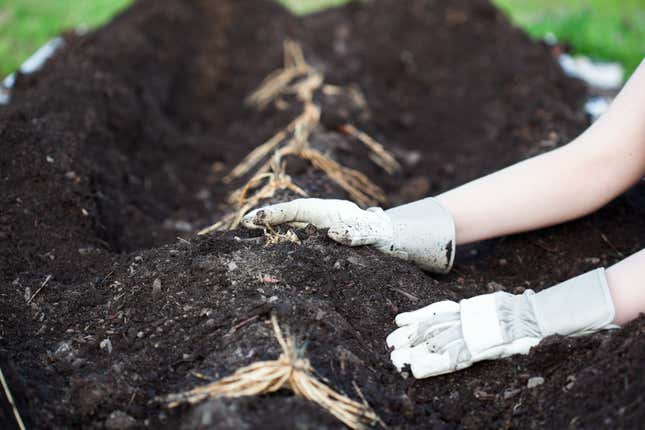
Photo: Stephanie Frey (Shutterstock)
To plant asparagus crowns, you’ll want to dig a long trench. At 8-12-inch intersections, make a hill of dirt, and then place the crown on it, and spread out the roots around it. Make the rows a foot apart or more, then cover the crowns up and make sure they are well mulched in.
Every spring you’ll see the spears come up, some thicker, some wispy. Only take the fattest spears, allowing the wispy ones to grow into ferns. These asparagus ferns grow three to four feet high, and grow the seeds for more asparagus. If your beds are younger than three, you should let all the spears grow.
Asparagus grows incredibly fast, you have to watch your bed daily in order to catch them all before they go to fern. But eating your own asparagus, directly from the bed, is so incredibly sweet. It tastes super fresh and bright.
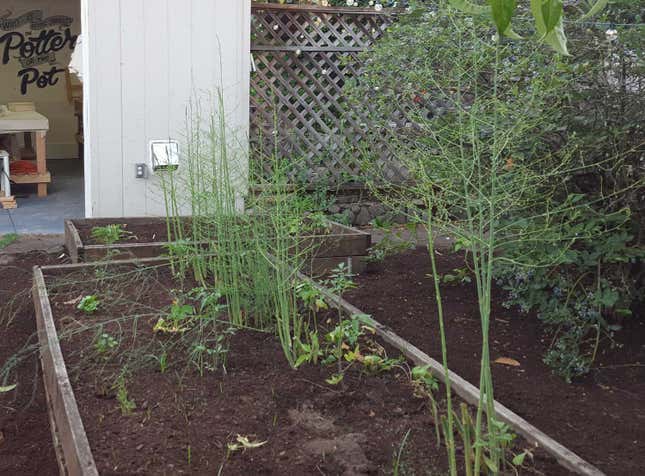
These asparagus are going to fern. Photo: Amanda Blum
The ferns will take over a space, so a lot of people leave their asparagus to its own bed. Last year, I read tomatoes co-plant well with them, and so I tried it with great success. Asparagus season is well over by the time you even plant tomatoes, and when planted together, you stave off the asparagus beetle, which looks a lot like a ladybug but is definitely not one.
How to Grow Artichokes
My dream was to one day live some place where I could have a grand line of artichokes, so I’d always be able to go out and harvest them. I dreamed of baby artichokes and preserved artichoke hearts. I’m shocked to say, it is absolutely everything I wanted and more.
Artichoke plants are a showstopper. They can grow even through winter, although they won’t produce at all. But come Spring, with a little fertilizer and care, they will begin to jolt towards the sky. Within a few years you’ll find your artichokes are five or six feet tall, and taking over the space.
As they grow, they’ll bud at the top, and those buds grow into artichokes. Each plant will produce one or two large artichokes, and then begin producing more and more of them in increasingly smaller sizes.
The key is to learn when to harvest them, while the bud is still tight, but fully grown, just before it starts to open. Cut them at the stem as far down as you like (some people really like choke stem, I find it too woody) and bring them inside to steam.
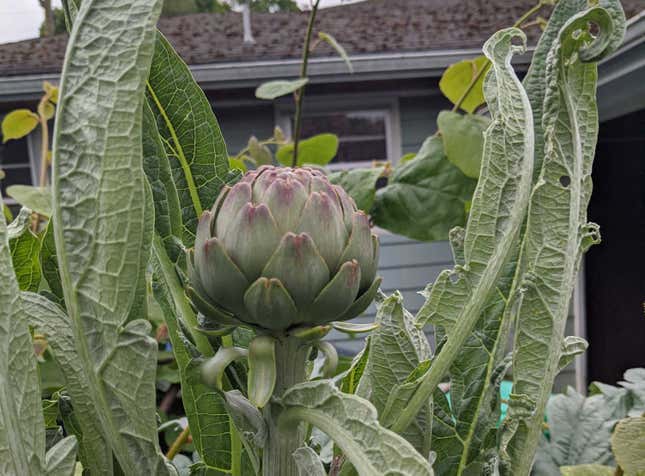
Photo: Amanda Blum
Generally, I harvest the first four-five per plant, and then I leave the smallest chokes to bloom. An artichoke flower is one of the most magnificent sights on earth. When they open, a fuzzy technicolor purple fur emerges, before they bloom all the way.
They are breathtaking, but more importantly, they are also favored by bees. On any given day you’ll find five, six, even 20 bees buzzing around each flower, getting their fill of pollen. More charming though, is that you’ll also find bees pollen drunk, passed out in your choke flowers. Each morning, you can walk out, and witness a whole line of bee butts in the air, sleeping in your flowers.
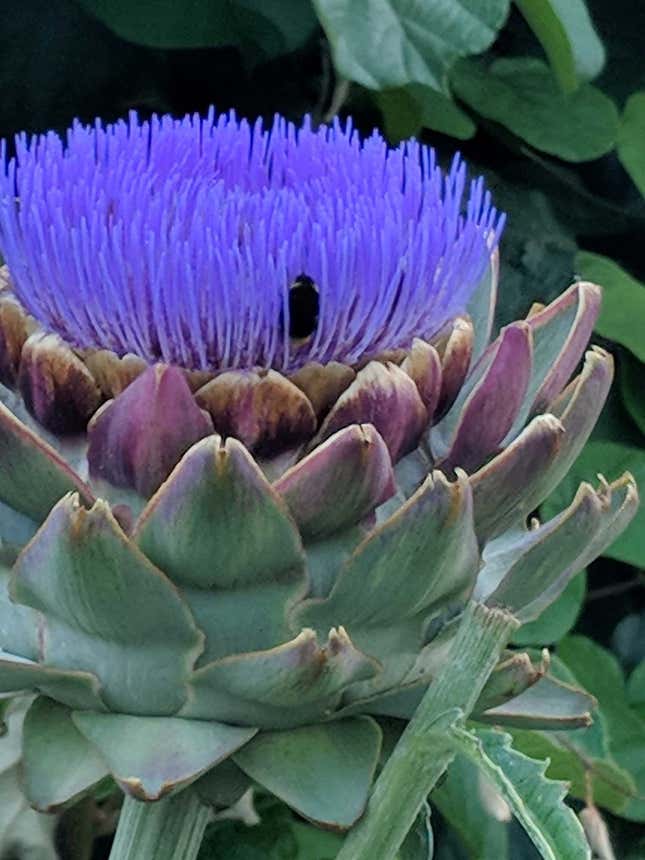
Photo: Amanda Blum
Some people harvest the flowers as well, and you can easily harvest artichoke seeds from them, but I leave them for the bees.
Artichokes are best bought as starts from the garden center or started very early in February. Make sure you give them enough space, artichokes can easily be six feet around and grow to eight feet tall. They don’t require any special planting instructions, just create a hole the size of the root ball and plant them, and remember they love mulch and need to be fertilized twice a year, in fall and spring. Use blueberry and azalea fertilizer. In the fall, cut them all the way back to the ground, and mulch them in heavily for winter. Your artichoke plant will form pups, and those can be transplanted as new plants to other spots in your garden in fall or winter.
Now is a great time to purchase them and get them in the ground, you have enough time to harvest a little from them this year, but next year, they’ll be magnificent kings of the garden space, perfect along a fence, creating a border that loves the sun, or as a centerpiece to your space.

 Hollif
Hollif 
































